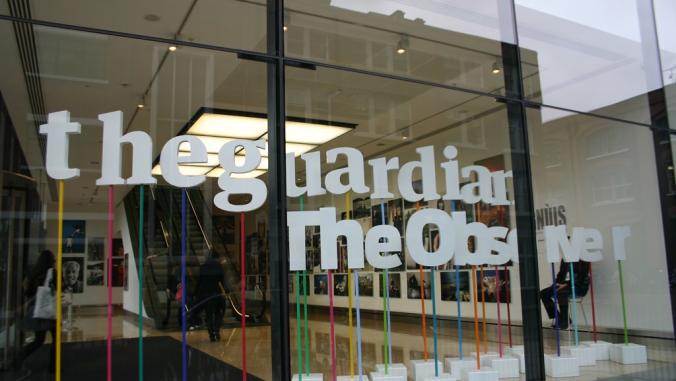Dell spills the sustainability specs on its EMC acquisition
Just over eight weeks ago Dell closed a $60 billion merger with data storage giant EMC — so what happens to the two firms’ sustainability strategies?

Late last month Dell hosted its first in-house conference under its new guise as Dell EMC, following the closure of its $60 billion merger with global data storage and analytics giant EMC Corporation in September.
At the event, themed "Transformation," journalists met a suite of new and revamped Dell EMC products — all arranged neatly under the new branding — and marvelled at how smoothly the transition appeared to be going.
One Forbes journalist even suggested the integration of the two companies was going so well it would go down as a business masterclass. "Everyone told a story of an acquisition that was handled internally with transparency and a clarity of purpose that will end up in business school case studies in years to come," they noted.
So the business side of the acquisition seems to be going remarkably smoothly — but can the same be said for the sustainability side of the equation?

Trisa Thompson, Dell's corporate social responsibility manager, has the formidable task of marrying the two companies' environmental ambitions. It's no mean feat; EMC has 67,000 employees, 16 sustainability targets and offices all over the world. Dell has more than 100,000 employees, 21 sustainability goals and similarly has operations across the globe.
Both companies' sustainability strategies were developed independently of each other, making the merging of the two a daunting task. Nevertheless, Thompson and her team are tackling the problem head on, and are hard at work turning two plans into one. Somewhat serendipitously, not only do both companies have 2020 as their primary target year, but the individual goals cover roughly the same ground.
"Very luckily for me and the team, the legacy EMC goals line up to the legacy Dell goals — there's very little difference," she explained to BusinessGreen. "They may be a little higher on renewables, we're more on energy reduction of our product portfolio, but we both had those goals in there."
However, merging two sustainability strategies into one is certainly not without its challenges. For starters, although many goals were aligned, Thompson found that differing measurement strategies make some almost impossible to compare progress.
We can have a much bigger impact helping our customers use our technology to make a difference, and that is by far more powerful than anything we can do ourselves.
"For recycling, we measure in pounds, not units," she explained to BusinessGreen. "But EMC do some recycling but mostly they do upcycling, so they refurbish a lot of what they produce."
Moreover, getting all employees, across both companies, on board will be a challenging and time-consuming mission. And after the 2020 goals comes the challenge of drawing up a new joint ambition for the newly enlarged company out to 2030, or even beyond.
Now just over two months after the closing of the merger, and with four months or so until the merged 2020 plan is expected, Thompson is in the thick of tackling those issues. Here she shares with BusinessGreen some of the key lessons she's learning on the path to partnership.
Keep an open mind
When the merger was first mooted, Thompson had a very different idea about how it would pan out in her department. "I had a clear view of what I thought the right answer was, and it's not where we are going," Thompson said.
"My answer was scrap the 2020 targets, come up with a short-term 2025 set of goals, then revisit the long-term goal. But I listened — we had a lot of debate on this topic — and I think we actually have a better answer."
Thompson called a selection of stakeholders, both internal and external, to ask what they thought Dell should do about the targets post-merger. Should it press ahead with the 2020 goals? Scrap 2020 and hastily assemble a 2025 target? Skip a reporting year and recalibrate for 2030?
Thompson heard the opinions of everyone from Dell employees to GreenBiz writers and Ceres campaigners. "The conclusion was, whatever you do be transparent," she explained. But the consensus was "there shouldn't be any reason we can't do 2020 at some level" — it may just require a little more explanation.
It's clear this habit of taking time out to listen to the views of others is deeply embedded in Thompson's approach. At one point during our interview, she stops mid-sentence and asks whether I would advise Dell to develop a long-term sustainability plan to 2050 or pursue 2030 targets, once the 2020 targets are reached.
"I'm leaning a little more towards 2050, but my team is not," she said. "Engineers, they want precision and [to know] how we're going to get there, and I'm like, 'When we said we were going to the moon, nobody knew how, but you're not going to get there if you don't just go, right?'"
Do the rounds
The crucial task during any merger is to understand the motivation of your new employees, she said. "My team has really made the rounds with everyone at EMC who own the goals. So we're really sitting down to understand their motivation. And once you understand how people are motivated, you can harness that energy and that power to get where you need to go."
She used the example of Dell's packaging expert, who is in charge of leading on the firm's target to ensure 100 percent of its packaging is made using sustainable materials by 2020. He grew up on a farm in New Hampshire, cares deeply about the environment and is keen to experiment with novel materials.
We can have a much bigger impact helping our customers use our technology to make a difference, and that is by far more powerful than anything we can do ourselves.
"He's gone from bamboo packaging to mushroom to wheat straw, and now we are doing air carbon," Thompson said. "And we're doing a feasibility study right now on ocean plastics."
"So once you understand where he's coming from, light a fire for him," she advised. "Help him. So we are spending a lot of time doing that now."
More widely, everyone in the company needs to understand the goals and their purpose. Although it may seem a tedious mission, this means getting people on the ground of both companies to explain the sustainability story. "On the grassroots level we are doing a lot of presenting, and [EMC] are doing it for us too," Thompson said. "We're making the rounds to make sure that the people who are doing the work every day get it. That helps us sell it all the way up the ladder."
And further up the chain plans for presentations to the senior executives are in the works, although diaries are proving tricky. "It will take a bit of time because at a senior executive level everyone wants to get on their calendar right now. The marketing rotation program wants to talk to them, the diversity team wants to talk… 30 days in, they don't have a lot of rest," Thompson joked.
Aim high
One reason why the Dell merger has worked so well is that both companies have a similar corporate culture, Thompson said. Neither is overtly conservative in nature, or outrageously radical. As tech giants, both also face the same challenges to developing sustainability targets — and a natural faith in the innovation that technology can bring.
Thompson hopes to use these factors to develop an ambitious joint sustainability strategy that places at its center Dell's plan to become a "net positive" company. Some of the technology EMC brings to the table will enable Dell to shift even more heavily towards cloud computing, which promises to introduce millions of people to a cleaner, more efficient working style. "We can have a much bigger impact helping our customers use our technology to make a difference, and that is by far more powerful than anything we can do ourselves," she said.
Combining these forces could make Dell EMC, now one of the world's largest technology companies, a leader in the sustainability stakes.
It's far too early to tell whether the Dell-EMC merger will indeed become a business school case study, or even whether its converged sustainability strategy will live up to Thompson's optimism. But approaching the challenge of a massive merger with firm ambitions, an open mind and a determination to secure support throughout the company are good ways to start — and excellent lessons for businesses facing the same challenge.
This story first appeared on:





